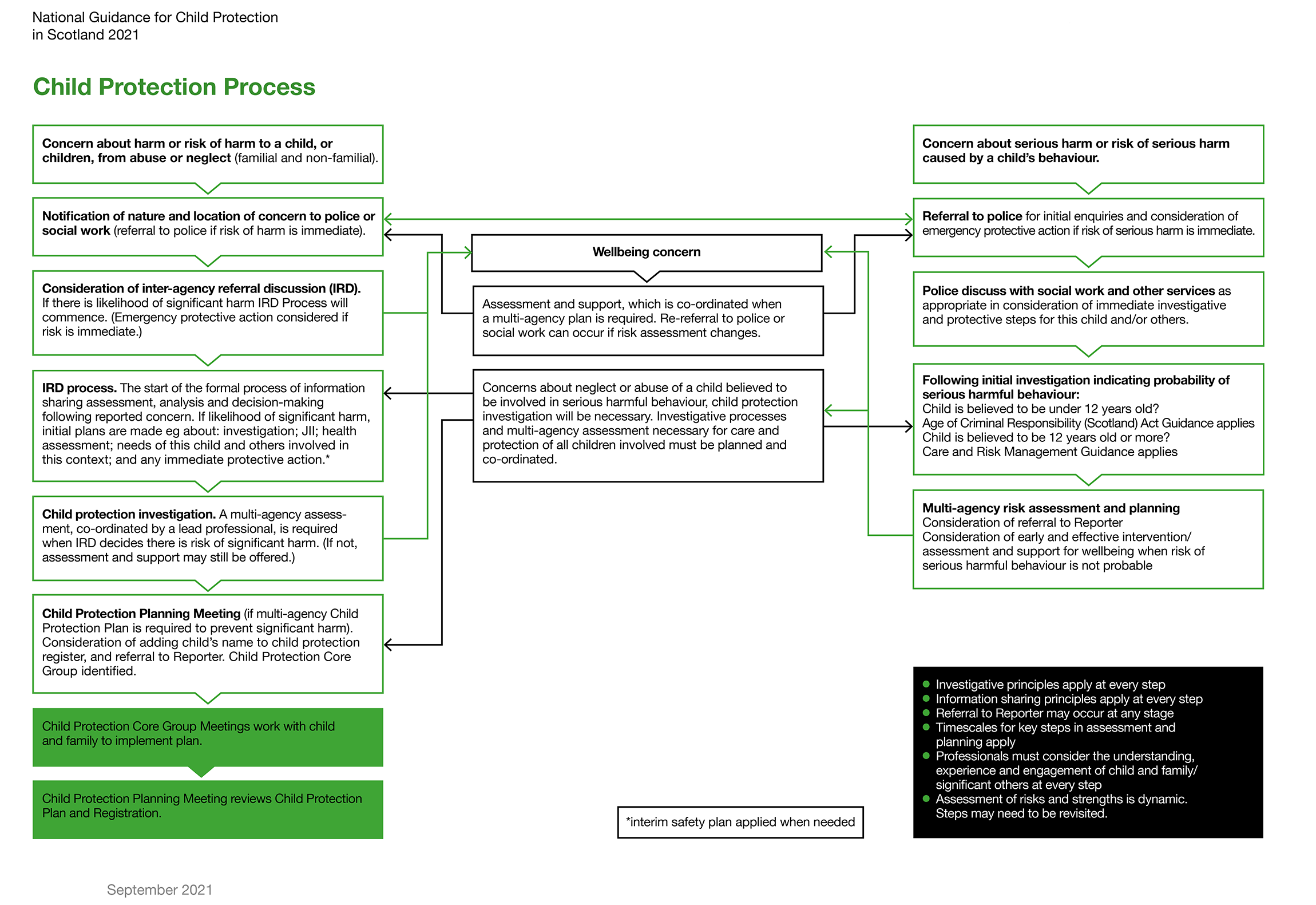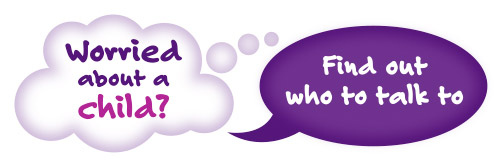Child Protection Process
It’s everyone’s job to make sure I’m aright
Most children and young people are living in safe and nurturing environments, cared for by their supportive families, carers and communities.
Children and young people are supported by universal services such as GPs, health visitors, nursery workers and teachers to help them to reach their full potential.
However, some children and families need additional support. At times, families experience challenges and difficulties and extra help is needed, sometimes for short periods and for others over a longer period.
In Scotland, support is offered to children, young people and their families or carers within the context of our national approach, Getting it right for every child (GIRFEC) to ensure help is available when it is needed.
For some children and young people there can be additional risks that mean there is concerns about their safety and wellbeing. In this situation children and families will need a more intensive level of support and assistance.
Working with families, there are many professionals whose job it is to ensure that children and young people are protected, including social workers, police officers, teachers, health visitors and Children’s Reporters.
All professionals working with children or their families have a role and responsibility to ensure all children and young people are safe and protected.
Communities also have a role to look out for children and young people who they may be worried about and let services such as police or social work know if they have any concerns.
It is everyone’s responsibility to make sure all our children and young people are safe and protected from harm and take action if we are worried or notice something that causes concern. We all need to be curious about the wellbeing of children and young people.
Child Protection Process
Child protection means protecting a child or young person from child abuse or neglect.
Abuse or neglect need not have taken place in order for action to be taken to protect a child or young person; action can be taken when there is a likelihood or risk of significant harm from abuse or neglect whether physical, emotional or sexual.
All forms of child abuse and neglect have an adverse impact on a child or young person’s health and wellbeing. The impact can be immediate, or it can build up over time, leaving children and young people with vulnerabilities and challenges throughout their lives.
This is why it is important to try and prevent child abuse and neglect from happening at all and, where it does occur, why it is best to identify it early and respond quickly to help the child or young person. This will minimise harm both immediately and in the longer term.
When there is a concern that a child or young person might be at risk of significant harm from abuse or neglect, a child protection planning meeting will take place to allow information about needs, risks and protective factors to be discussed by everyone involved, including family members.
The child protection planning meeting will be informed by a multi-agency child protection assessment to assess the needs and risks in relation to the child and what support might be required to meet these needs and reduce any risks.
If it is agreed at a child protection planning meeting that a child or young person is at risk of significant harm from abuse or neglect, and the family needs support from professional services in order to reduce the risk of harm, the child or young person’s name will be placed on the child protection register and they will have a Child Protection Plan which sets out what everyone will do to help.
When a child or young person is placed on the child protection register, the individual risk/concern factors which affect them are recorded and their Child Protection Plan is developed around these.
Everyone involved in supporting the family will meet regularly to make sure that the plan is working and that risk is reducing.
This is called a core group meeting. Once the child or young person is no longer in need of a Child Protection Plan, their name is removed from the child protection register at a review child protection planning meeting.
The family will still receive support from professional services for as long as this is needed.
Use the tabs below to learn more about the Child Protection Process
Child Protection Process diagram
The process of responding to child protection concerns in diagrammatic form can be represented in the following way. However, it should be noted that at any stage, the process may be stopped if it is felt emergency measures are required to protect the child or no further response under child protection is necessary. In addition, at any stage Referral to Reporter may occur.



